Increase Your Conversions With These Impactful Microcopy Words
There are many things that can help you optimize your website. You could change the design, the copy, the subliminal messages, the headings, subheadings, colours and whatnot. Recent studies show that e-commerce business owners usually mostly test CTA buttons, headlines, and the layout of the website. But only 8 per cent of their tests are […]
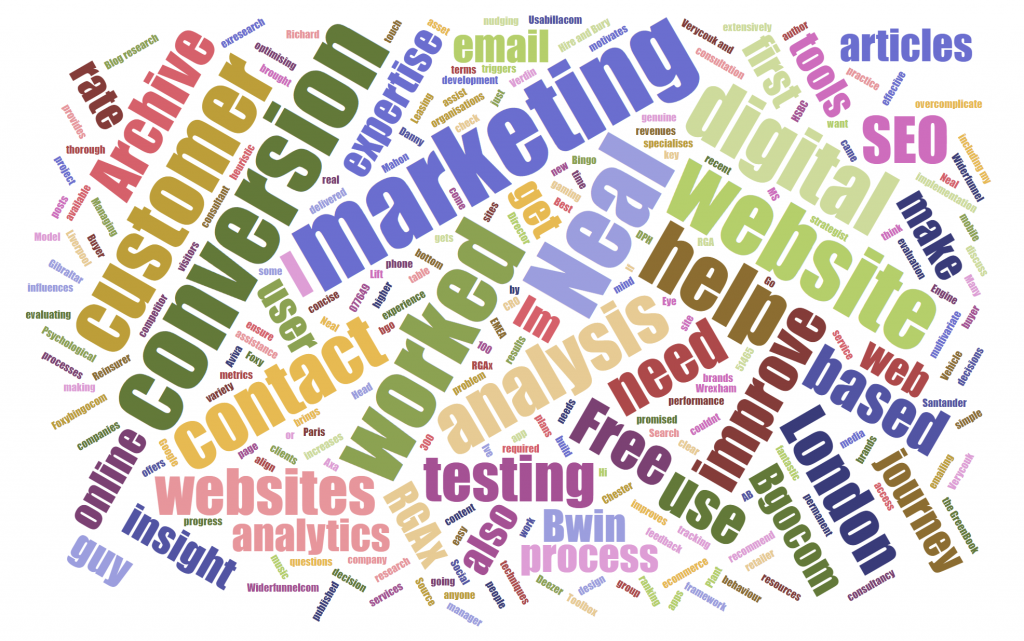
There are many things that can help you optimize your website. You could change the design, the copy, the subliminal messages, the headings, subheadings, colours and whatnot. Recent studies show that e-commerce business owners usually mostly test CTA buttons, headlines, and the layout of the website. But only 8 per cent of their tests are dedicated to the actual copy.
Perhaps, the copy needs a bit more attention? After all, we mostly transfer information through words, and not only imagery and design. Of course, Call to action shapes, colours, and location are important, but if you fail to share the main message with your audience and resonate, they will most likely never care about your calls to action.
What is Microcopy
A Microcopy is the change, addition or removal of a word, phrase or sentence on your website. It can be a message, a Call-To action or a section. Nevertheless, it can make all the difference in the world. Of course, if your website lacks traffic, Microcopy isn’t going to help you at all. It’s a subtle way of optimising your conversion process, but for that, you already need a constant flow of leads and traffic.
More often than not, increasing your conversion rates by 10 per cent depending on the change of a single word of phrase dissuades your customers. To transform hesitant visitors into clients and brand advocates, you need to convey the right message at the right time.
For example, this business found out that there have been international clients trying to make a purchase from their website, despite it was India focused. Moreover, there were some local people trying to purchase with the use of foreign debit cards. They had to resolve the issue, without changing how the whole system works.
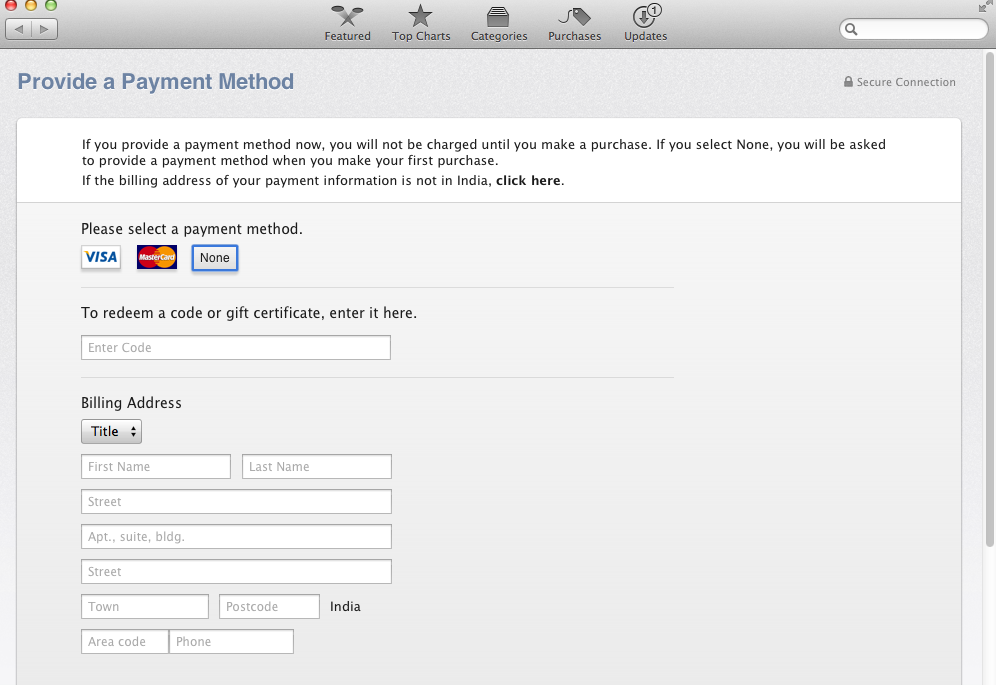
Thus, they simply added a line along with a hyperlink (click here) button, for the troublesome customers. This increased the conversion level by roughly 10 per cent, which was approximately a bit under the number of prospects lost due to the malfunction of the system. Sometimes, we shouldn’t change or remove words, and instead add something that was missing to the copy.
Some websites might miss telling their users that the billing address of their credit card should match the address that they state in the form. A billing address isn’t always the same as a shipping address, have that in mind, and this might mess up your payment gateways, resulting in a decreased conversion rates.
Microcopy Examples
Using A/B testing with a control and a variation should always be your priority when changing things around your website.

Strive for a statistical difference of over 0.5 per cent and allow for a large enough time window and event to pass so that you can clearly see the definition of your change and how it alters the results on your webpage.
Changing words like “Purchase” to “Buy Now” can lead to a decrease or an increase in conversions, depending on the product, service and deal you are offering. Microcopy can also be a good opportunity for us to distinguish ourselves from our competitors with a sense of humour and a general feel for communication.
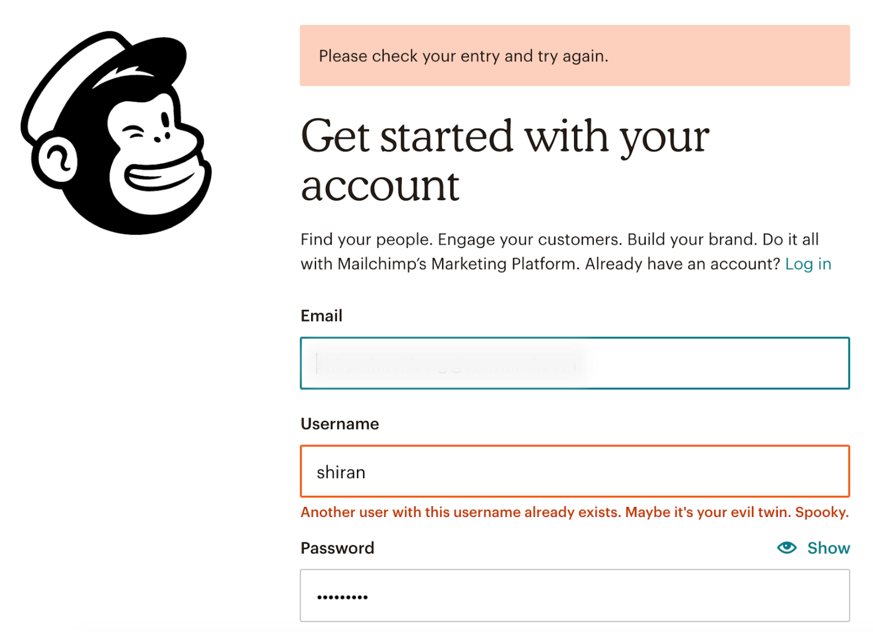
The addition of these 7 words under the Username box will certainly make someone smile. And making people smile online isn’t the easiest task in the world. Other great examples can feature filling in instead of the user.
An exemplary fill-in form and search bars
Filling information, or showing exemplary information in a box can make all the difference in the world for lazy users or ones that are distracted during their visit to your website. The best example here would be Airbnb.

By filling in try Barcelona, not only is that a call to action, but it already gives ideas to the people because everyone with few exceptions knows how Barcelona looks like. And everyone wants to go there.
Fill forms and can be a very handy tool. Not only are they used to require some information from the user to proceed, but they can also be used to convey indirect or direct messages as shown above. Use them to your advantage and A/B test whether there is any improvement.
Reassurance
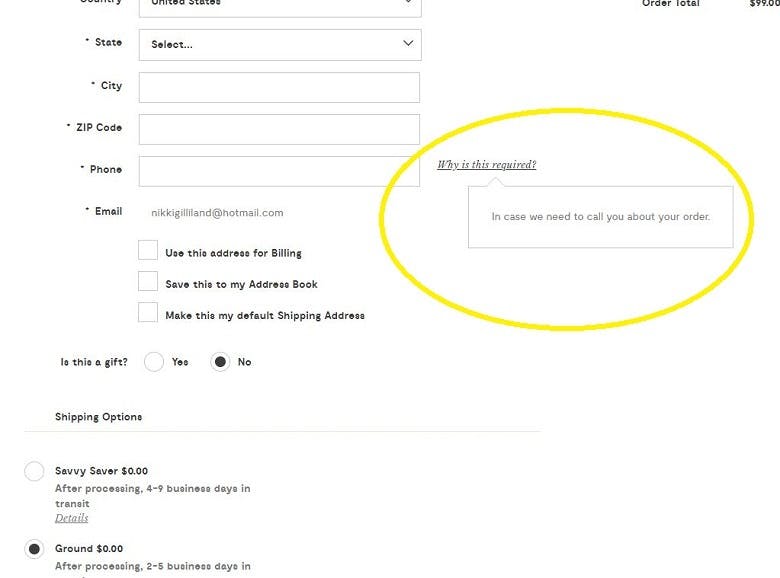
Some users are hesitant to give out personal information like phone numbers. But honestly just answering a potential question right away might solve this. If you have information that some percentage of your users have dropped down and didn’t finish the sign-up because of the phone number field, this is a way to battle their objections.
Many E-commerce business managers know that simply offering the client a bundle during the checkout process wouldn’t work. Adding a “View Package” button, however, would allow the users to closely inspect what they could buy for the discount offered. Such a tiny microcopy would eventually greatly increase the purchase rate of bundles.
Facebook, for example, uses their forms to nudge users into sharing, posting and whatnot.

Moreover, despite them generally trying to make you share as much as possible, there are other options attached right next to the message, in case you change your mind and tag someone, or upload a photo.
If you are promoting software, you should almost never leave empty fill forms, and instead, nudge your clients to do what is in your favour.
So if you got the idea of what a good microcopy is, let’s dive further into getting to know what you need to make one.
Study your audience to write a better microcopy
More often than not, companies get tangled in their own professional “company jargon” and exclude the uneducated folk that know nothing of the terms used. Internal language should be easily transformed into accessible words and phrases. Of course, if you are selling a technical product or service, make sure to include the specific parameters, but everything else should be in understandable language.
Let people have a choice
You can use focus groups and test out how they react to certain scenarios. Let them share with you their experiences and take notes. Have you ever used a platform like Shopify? In Shopify, you need to choose your store name at the beginning and if you have no idea what it should be, it is going to take you a while to decide something so important. Some even decided not to register at the time because they didn’t know what name to use.
Shopify resolved that issue by utilizing the powers of microscopy. They simply stated, “You can change the name alter at any time”. This greatly increased their conversion rates. Every product is unique, make sure to always inspect each element separately and ask yourself some questions.
- Is there something that stops users from purchasing?
- What are their main objections? (Shipping costs, shipping time, personal information, etc.)
- Are the users considering your product a good deal or an expensive luxury?
- Are they purchasing for themselves or for someone else as a gift?
These questions can guide you toward utilizing microscopy to your advantage.
If you are asking people things you shouldn’t be asking, let them know why you are doing this in the first place or drop the unnecessary questions. I don’t want to give away my email address to purchase a set of sneakers. How is that relevant?
But if you simply place a grey text next to the email address and state there that you are going to use it to confirm my order and won’t send me any marketing newsletters without my consent, I would gladly share it and finish my order.
You should know what pieces of personal information often lead to people refusing to cooperate. People are usually reluctant to share:
- Their Social Security Number (duh).
- Email Address
- Phone number
- Zipcode
- Irrelevant information like age, gender, etc.
- Nationality
- Profession
If you don’t necessarily need some of these and you are simply using your checkout process as a survey to gather customer data, don’t. It might decrease your conversion rates. If you need one of those fields filled out 100 per cent of the times, then explain to the customer why with a valid and logical microcopy.
Where can you use microcopy?
Microcopy could practically be used anywhere on your website, as long as you are changing things via A/B testing and with a clear goal in mind. Battle objections and mention things that are not clear as daylight to your prospects. The most common locations to use microcopy are:
- Email messages
- Calls To Action
- Menus
- Fill forms
- Search Bars
- Confirmation pages
- Error Pages and Messages
- Loading pages and Messages
- FAQ
- Checkout clarifications and objections battling
All objections or possible worries should be dealt with subtly with the help of microscopy.
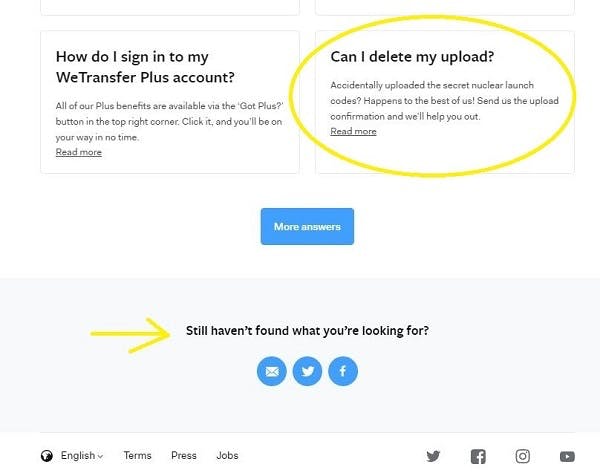
One of the main objections of uploading something on the internet or sending it would privacy and whether it can be deleted. WeTransfer, as one of the leaders in the service they provide, found out that many of the users were having concerns about whether they could delete something inappropriate that they’d previously uploaded.
As you can clearly see in the example above, they dealt with the issue with the help of FAQ. Microcopy could be used there, as well.
Useful small groups of text that you could use:
- No additional costs
- No recurring fee
- Free delivery
- 1-day delivery
- No hidden fees
Aside from these, make sure to always provide the user with immediate feedback. This means that after they successfully pass a certain step in your checkout process or sign-up process, you should show them a confirmation via a green check, or a message.
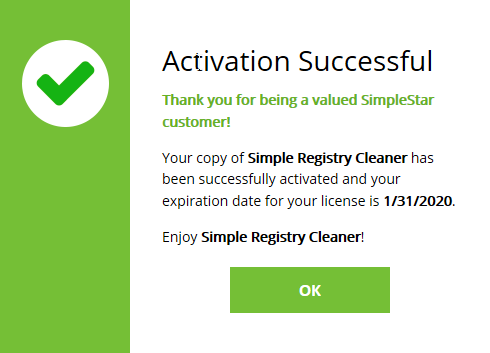
The green colour is usually associate with good and success, and red is associated with failure and bad events. Make sure to place your colours accordingly and alert your customers if some part of the checkout or register process is missing and they need to fill.

Three simple words can increase your conversion rates by 30 per cent, in some cases more.
Avoid repetition with CTAs
Another great example that can be given is that microcopy could be used to avoid confusion and repetition. Let’s say you are guiding a customer through a 3 of 4 step checkout process. If you place [Continue] as the single CTA on all of the steps, the customer would get confused after the 3rd continue. Wouldn’t there be a submit or review order button? Thus, Placing “Continue” first, then “Review Order” and “Submit Order” would ultimately make things clear for the customer.
Furthermore, CTAs like Review Order are more likely to be clicked than Submit, since they are less committing and won’t require the customer to pay right away.
In A/B testing or multiple variation testing we clearly favour the variation but even if it sounds like it would work better, never switch things up without actually testing. Trust your data and base your decisions on it.
Conclusion
At the end of the day, to fully utilize the power of microscopy to your advantage you need a lot of traffic and A/B testing. If you are lacking the traffic and leads, first focus elsewhere and build up your funnel. Microcopy greatly benefits businesses that already have an established process. In some cases, just a few tiny words can make all the difference in the world and convert a visitor into a brand advocate.
Each product and service is different and different places are suitable for the placement of microscopy. Strategize, test it out and see what works best for your product.

